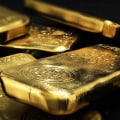The best-known precious metals are gold and silver, and it's not hard to understand why they're good assets to add to an investment portfolio. Gold is a key material for jewelry, and investors around the world also use it as a repository of wealth. If you're looking to add gold to your portfolio, you may want to consider a Gold IRA rollover. A Gold IRA rollover is a great way to diversify your retirement savings, and our Gold IRA rollovers guide can help you get started.
The truth is that no one can tell you what precious metal you should buy, not even us. As with any other asset class, a precious metals portfolio is better insured when it is diversified. For beginners, silver or gold may be the best place to start. Once you have at least a portion of each one in your portfolio, many investors begin to integrate lesser-known metals such as platinum, palladium or copper. By diversifying with precious metals, you can make your asset portfolio less risky.
Precious metals are rare metals that have a high economic value. They are valuable because they are scarce, useful for industrial processes or have investment properties that make them a good store of value. Notable precious metals include gold, silver, platinum, and palladium. Gold is the best-known and most invertible precious metal.
It is unique because of its durability (it does not corrode), its ability to mold and its ability to conduct heat and electricity. While it has some industrial uses in dentistry and electronics, it is mainly used to make jewelry or as currency. It has long been a store of value. For this reason, investors seek it in times of economic or political turmoil and as a hedge against rising inflation. It is unique because of its durability (it does not corrode), its ability to mold and its ability to conduct heat and electricity. While it has some industrial uses in dentistry and electronics, it is mainly used to make jewelry or as currency. It has long been a store of value. For this reason, investors seek it in times of economic or political turmoil and as a hedge against rising inflation.
There are many ways to invest in gold. You can buy physical gold coins, ingots or jewelry. Investors can also buy gold stocks (shares of mining, streaming or gold royalty companies), gold-focused exchange-traded funds (ETFs), or mutual funds focused on gold. Every gold investment option has its pros and cons.
Drawbacks include the expense of storing and insuring physical gold and the potential underperformance of gold stocks and ETFs compared to the price of gold. Advantages include the ability of physical gold to track the price of the precious metal and the potential for gold stocks and ETFs to perform better. The dual function of silver as an industrial metal and as a store of value tends to make it more volatile than the price of gold. Volatility can have a major impact on silver stock prices.
In some cases, silver prices may surpass gold during periods of high industrial and investor demand. Platinum, like silver, is used primarily as an industrial metal. It is essential for the automotive industry, which uses it to manufacture catalytic converters that help reduce vehicle exhaust gas emissions. In addition, the oil and refining sectors and the IT industry use platinum.
Some jewelry is also made of platinum. Given its rarity, metal has some investment value, although not to the same extent as silver or gold. An emerging risk of investing in precious metals is the rise of cryptocurrencies. Cryptoassets have investment properties similar to those of gold and silver.
Both are a store of value and a potential hedge against inflation and geopolitical and economic risks. As more investors turn to cryptocurrencies, investor demand for gold and silver could decline and push their prices down. Investing in precious metals is not for everyone. You must determine why you want to invest in precious metals (a hedge against inflation, store value, diversify your portfolio or benefit from higher prices) and choose the metal and investment vehicle that best suits your investment thesis.
Each option has its advantages, disadvantages and risks. One of the biggest risks is that you may be right (p. e.g.,. Investors should carefully consider whether they want to invest in precious metals and, if they do, fully understand the risks associated with the investment they have chosen.
The quick answer is that gold, silver, platinum and palladium are the main metals approved by the IRA and are the best metals to invest in. Here is a brief guide to the different types of precious metals investments that will help you make the right decisions for your personal investment portfolio. The Internal Revenue Service (IRS) classifies physical holds of precious metals as collectibles, subject to capital gains tax. Silver is a suitable physical metal for an IRA account, although it is also available for direct investments.
What further complicates matters is the fact that precious metal ingots come in several different forms. Engineer, Portfolio Manager, Precious Metals Investor, Technical Analyst, Owner Trader, Swing Trader. Although palladium and platinum belong to the same group of metals and look similar, they are different. However, given that the world invests in cryptocurrencies, stocks and online trading, is it still prudent to make a direct investment in precious metals, such as physical gold coins? Yes, many investors choose to add gold to their portfolios.
We'll start this comprehensive guide with a summary of the latest trends in the precious metals market. For centuries, precious metals have been in high demand due to their unique properties and high economic value. Shiny metal is often considered a more stable investment alternative during periods of economic instability and uncertainty. Finally, the amount of taxes you owe on precious metals will depend on the basis of the cost of the actual metal.
Although the IRS gives credibility to platinum as an investment vehicle, the white metal has no 5000 years of history as a currency and protector of wealth. Knowing how to invest in precious metals can be intimidating at first, but the knowledge is readily available to motivated DIYers. However, the inherent value of precious metals and the increasing demand for a wide variety of technologies around the world make them a safer option for investors, especially compared to volatile types of investment, such as the stock market. While there was a clear demand for precious metals from investors, demand for gold and silver was higher.
. .



